Bolt Action: Gentleman’s War Fahrzeuge & Waffenteams
Es kommen weitere Waffenteams aus Resin und die beiden Fahrzeuge aus der neuen Starterbox sind bald separat verfügbar.
Fallschirmjäger weapons teams – 18,00€
Infantry weapons teams are a key component of any Bolt Action army, providing as they do great tactical flexibility for your force. Sniper teams, anti-tank teams and flamethrower teams are among the most prevalent, presenting your opponent with multiple challenges to overcome.
The Panzerschreck was a German development of the American bazooka, first encountered in North Africa, firing a large calibre shaped-charge rocket projectile. The back-blast from the weapon was so intense that early teams wore protective capes and masks – later a blast shield was fitted to the weapon giving it a distinctive appearance. The Panzerschreck and disposable anti-tank Panzerfaust had replaced the Panzerbüchse 39 anti-tank rifle by 1944.
During the battle of Stalingrad, Russian snipers took such a heavy toll upon the beleaguered Wehrmacht that the Germans began to train and equip their own marksmen to undertake a specialist role as snipers. A variety of rifles were used for sniping, including the standard KAR-98K and the semi-automatic Gewehr 43, all fitted with the high quality ZF39 telescopic sight, and equipped with precision-manufactured ammunition.
Flamethrowers – Flammenwerfer – were used through the war and were often employed against buildings or fortifications. During the latter part of the war, the Germans produced a lighter, smaller design that carried enough fuel for a single burst – effectively a one-shot flamethrower –the Eintossflammenwerfe. It is not known, however, whether this weapon was actually ever employed.
Box contains:
- Six Warlord Resin™ Figures
- Plastic Bases
- Three Order Dice
Italian Paracadutisti weapons teams – 18,00€
Infantry weapons teams are a key component of any Bolt Action army, providing as they do great tactical flexibility for your force. Sniper teams, flamethrower teams and light mortar teams are among the most prevalent, presenting your opponent with multiple challenges to overcome.
On paper, every Italian infantry division was to have eight assigned flamethrower teams for digging out entrenched infantry and assaulting fortifications. In practice, of course, these supplies were much more scant.
The Italian army had no specialist sniper rifle, and the relatively light-weight Carcano Model 1891 with its small calibre bullet was not ideally suited to the role. However, in the hands of a skilled marksman the weapon would prove deadly enough.
The Brixia 45mm light mortar was a powerful and successful weapon in the hands of properly trained soldiers. Its rate of fire was higher than similar weapons employed by other nations, and its accuracy was also unparalleled.
Box contains:
- Six Warlord Resin™ Figures
- Plastic Bases
- Three Order Dice
Soviet Army (Winter) weapons teams – 18,00€
Infantry weapons teams are a key component of any Bolt Action army, providing as they do great tactical flexibility for your force. Sniper teams, flamethrower teams and light mortar teams are among the most prevalent, presenting your opponent with multiple challenges to overcome.
The sniper became synonymous with the Red Army, particularly during the grim sieges of Stalingrad and Leningrad. ‘Sniper schools’ were established in bombed-out buildings and cellars, where successful snipers passed down their skills to ever-growing numbers of students – many of them women. Soviet propaganda lavished attention on successful snipers and encouraged a doctrine of ‘sniperism’ among the troops. Snipers used telescopic sights on either a bolt action Moisin-Nagant 1891/30, or, more rarely, a Tokarev SVT-40 smi-automatic rifle. A variety of ammunition was used, including tracer and armour-piercing rounds. Soviet snipers were available at company level working as teams or sometimes on their own. Individual Red Army squads would often have a designated marksman with a scoped rifle to help compensate for the lack of long-range firepower due to the large numbers of submachine guns in use. Soviet snipers became renowned for their fieldcraft, stealth and patience. The most successful snipers each accounted for hundreds of the enemy – around 500 being the greatest tally recorded by a single sniper.
The standard light mortar used by Russian infantry during World War II was the 50mm Infantry Mortar Model 1940 (50-PM 40), a cheaper version of the earlier model 1938, In addition, the Soviet army received considerable numbers of 2-inch mortars from Britain via Lend-Lease. The 50mm was deemed a ‘company’ mortar as opposed to the heavier 82mm battalion and 120mm regimental mortars. The allocation of 50mm mortars was initially to individual teams at platoon level, but later they were more often concentrated together at company level for use en masse. The weapon was easily man-portable and could lay down a high explosive or smoke bombs at a range of over 800 yards.
The Soviets made great use of flamethrowers including FOG-1 static types dug in to cover bunkers and trenches. Due to shortcomings in developing other credible anti-tank weapons, Red Army doctrine placed strong emphasis on using flamethrowers as anti-tank as well as anti-infantry weapons. They even formed separate motorised anti-tank flamethrower battalions in 1943. By far the most common Russian flamethrowers were the man-packed ROKS types. The ROKS-2 was designed with a fuel tank that looked like an ordinary backpack and a nozzle resembling a rifle, so as not to attract unwelcome attention on the battlefield.
Box contains:
- Six Warlord Resin™ Figures
- Plastic Bases
- Three Order Dice
US Army weapons teams – 18,00€
Infantry weapons teams are a key component of any Bolt Action army, providing as they do great tactical flexibility for your force. Anti-tank teams and flamethrower teams are among the most prevalent, presenting your opponent with multiple challenges to overcome.
The tasks of scouting and sniping were similar in American doctrines. In the US manual it was clearly stated that the duty of a sniper was to kill enemy officers in order to damage the morale of enemy troops. They were equipped with a telescopic sight on a M1903 bolt-action Springfield rifle, and also had close-combat weapons such as pistols and shotguns with which to defend themselves if discovered. Both members of the team had sniper training so the role of spotter was interchangeable.
Mortars were the most commonly available type of support weapon. Paratroopers and Rangers had one mortar per platoon, in addition to those that may have been assigned at company level. Normally they were deployed in a suitable rear position, no further than 100 yards from the observer in order to ‘cover the most dangerous approaches to the platoon area’. The standard light mortar was of relatively large calibre at 60mm. It fired a correspondingly larger and more effective shell over a greater range than the smaller mortars used by the Germans and the British. The only problem was the weight (19kg) that meant a larger team was needed to move it.
Flamethrowers were used throughout the war, especially in the Pacific, to clear out tunnels and bunkers. During the Normandy landings, the number of flamethrowers was increased to allow the men to open a gap in the fortified lines.
Contains the following Warlord Resin PlusTM figures:
- 2-man Sniper team
- 3-man Light Mortar team
- 2-man Flamethrower team
Waffen-SS (1943-45) weapons teams – 18,00€
Infantry weapons teams are a key component of any Bolt Action army, providing as they do great tactical flexibility for your force. Sniper teams, anti-tank teams and flamethrower teams are among the most prevalent, presenting your opponent with multiple challenges to overcome.
The Panzerschreck was a German development of the American bazooka, first encountered in North Africa, firing a large calibre shaped-charge rocket projectile. The back-blast from the weapon was so intense that early teams wore protective capes and masks – later a blast shield was fitted to the weapon giving it a distinctive appearance. The Panzerschreck and disposable anti-tank Panzerfaust had replaced the Panzerbüchse 39 anti-tank rifle by 1944.
During the battle of Stalingrad, Russian snipers took such a heavy toll upon the beleaguered Wehrmacht that the Germans began to train and equip their own marksmen to undertake a specialist role as snipers. A variety of rifles were used for sniping, including the standard KAR-98K and the semi-automatic Gewehr 43, all fitted with the high quality ZF39 telescopic sight, and equipped with precision-manufactured ammunition.
Flamethrowers – Flammenwerfer – were used through the war and were often employed against buildings or fortifications. During the latter part of the war, the Germans produced a lighter, smaller design that carried enough fuel for a single burst – effectively a one-shot flamethrower –the Eintossflammenwerfe. It is not known, however, whether this weapon was actually ever employed.
Box contains:
- Six Warlord Resin™ Figures
- Plastic Bases
- Three Order Dice
Humber MK II/IV armoured car – 25,00€
The British and Commonwealth forces operated a considerable reconnaissance element that scouted ahead of the main armoured force, searching for enemy troop positions and dispositions. The Humber Armoured Car was one such vehicle used for this role, more than able to hold its own against other light vehicles and infantry. From the parched deserts of Africa to the streets and fields of Europe, the Humber Armoured Car spearheaded the Allied advance.
Replacing the aging Humber Light Reconnaissance Car, the newly designed Humber Armoured Car quickly became a mainstay of the Commonwealth forces, particularly in the North Africa desert war. Initially armed with one 15mm and one 7.92mm Besa machine guns. The later Mk IV replaced the 15mm gun with a US M5 or M6 37mm anti-tank gun. So successful was the Humber that it served throughout the war, including in the North West Europe and Burma campaigns.
Includes one plastic Humber Armoured Car model, Bolt Action Order dice, Bolt Action stat card, vehicle damage markers, assembly booklet and a full-colour waterslide decal sheet for British, Commonwealth, and Polish vehicles.
Sd.Kfz 222/223 armoured car – 25,00€
Germany’s highly effective blitzkrieg tactics during the early years of WWI in Europe, Africa, and the Eastern Front required fast, manoeuvrable vehicles. German blitzkrieg was made infamous at the start of the war and continued to prove effective in the deserts of North Africa. Spearheading these rapid and highly mobile attacks were the Wehrmacht’s Aufklärungsabteilungen (reconnaissance battalions). They ranged ahead of the main Panzer divisions, seeking safe routes and pinpointing enemy positions for elimination.
The Sd.Kfz 222 Leichter Panzerspähwagen (light armoured reconnaissance vehicle) was a four-wheeled drive armoured car built by Horch and armed with a 2cm light autocannon and co-axial MG34 machine gun. The Sd.Kfz 223 command variant removed the autocannon and added radio equipment with distinctive aerial frame. Seeing action in all theatres of war in which German forces participated it was also fielded by Romanian, Bulgarian and Nationalist Chinese armies.
Includes one plastic model that can be built as either an Sd.Kfz 222 or Sd.Kfz 223, Bolt Action Order dice, Bolt Action stat card, vehicle damage markers, assembly booklet and a full-colour waterslide decal sheet covering German, Romanian, Bulgarian and Nationalist Chinese vehicles.
Produkte von Warlord Games sind unter anderem bei unseren Partnern Fantasy-In und Minyarts erhältlich.
Quelle: Warlord Games


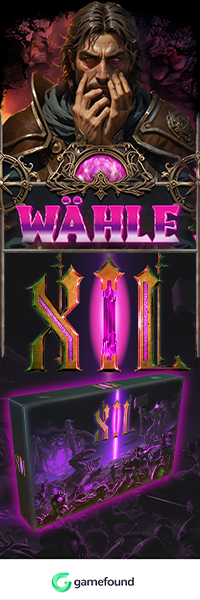
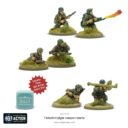
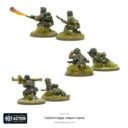
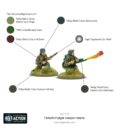
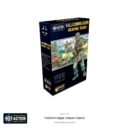
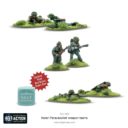
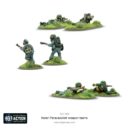
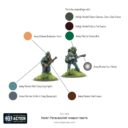
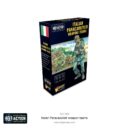
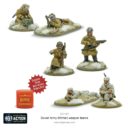
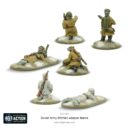
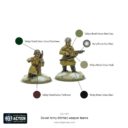
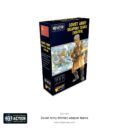
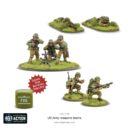
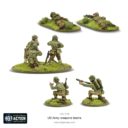
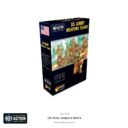
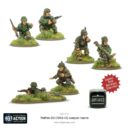
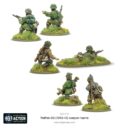
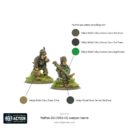
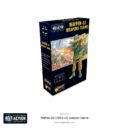
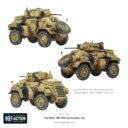
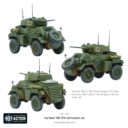
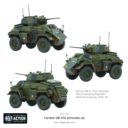
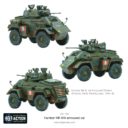
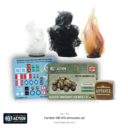
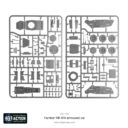
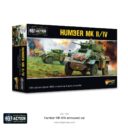
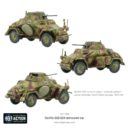
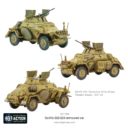
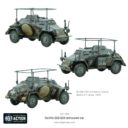
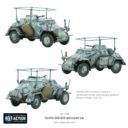
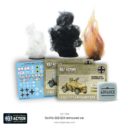
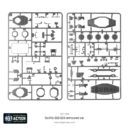
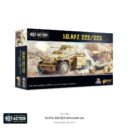


Kommentare